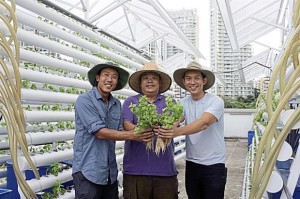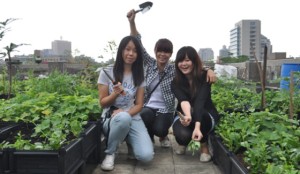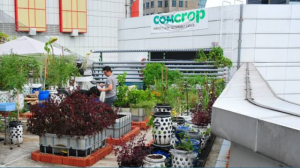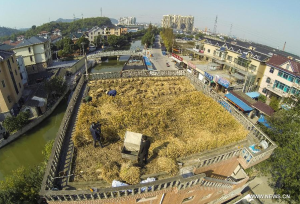by CHERYL FAITH WEE, The Star Online, March 10, 2014
Rooftop farms in Singapore are sprouting greens.

Urban farmers: Three of the four founders of ComCrop (from left) Kuah Zhen Shan, Allan Lim and Keith Loh, with vegetables from the urban farm at *Scape rooftop in Orchard Link, Singapore.
Photo: SPH
Source: www.thestar.com.my
Since the start of the year, Bjorn Low and his team of five have been growing small test batches of organic vegetables that can be used in mixed leaf salads – giant red mustard, mizuna, bok choy – and herbs such as basil and mint.
Like most farmers, they deal with pests such as pigeons nibbling on the plants. Team member Robert Pearce, 37, says jokingly: “I squirt the birds with water whenever I see them doing that.”
But unlike most farmers, the team’s plots are on the roof of People’s Park Complex car park – the latest rooftop farm to sprout in Singapore. Surrounded by high-rise buildings, the vegetables and herbs are a part of an urban farm, about 2,787sq m, slated to open on the sixth floor of the car park this year.
Last year, urban farming consultancy Edible Gardens, which helps restaurants and institutions build gardens, was approached by the car park’s re-development manager, Goldhill Developments, to see what could be done with the under-utilised space.
Low, 33, who co-founded Edible Gardens with Pearce in late 2012, says: “We’ve always been looking for a space like this to set up a commercially viable rooftop urban farm. This is our dream.”


